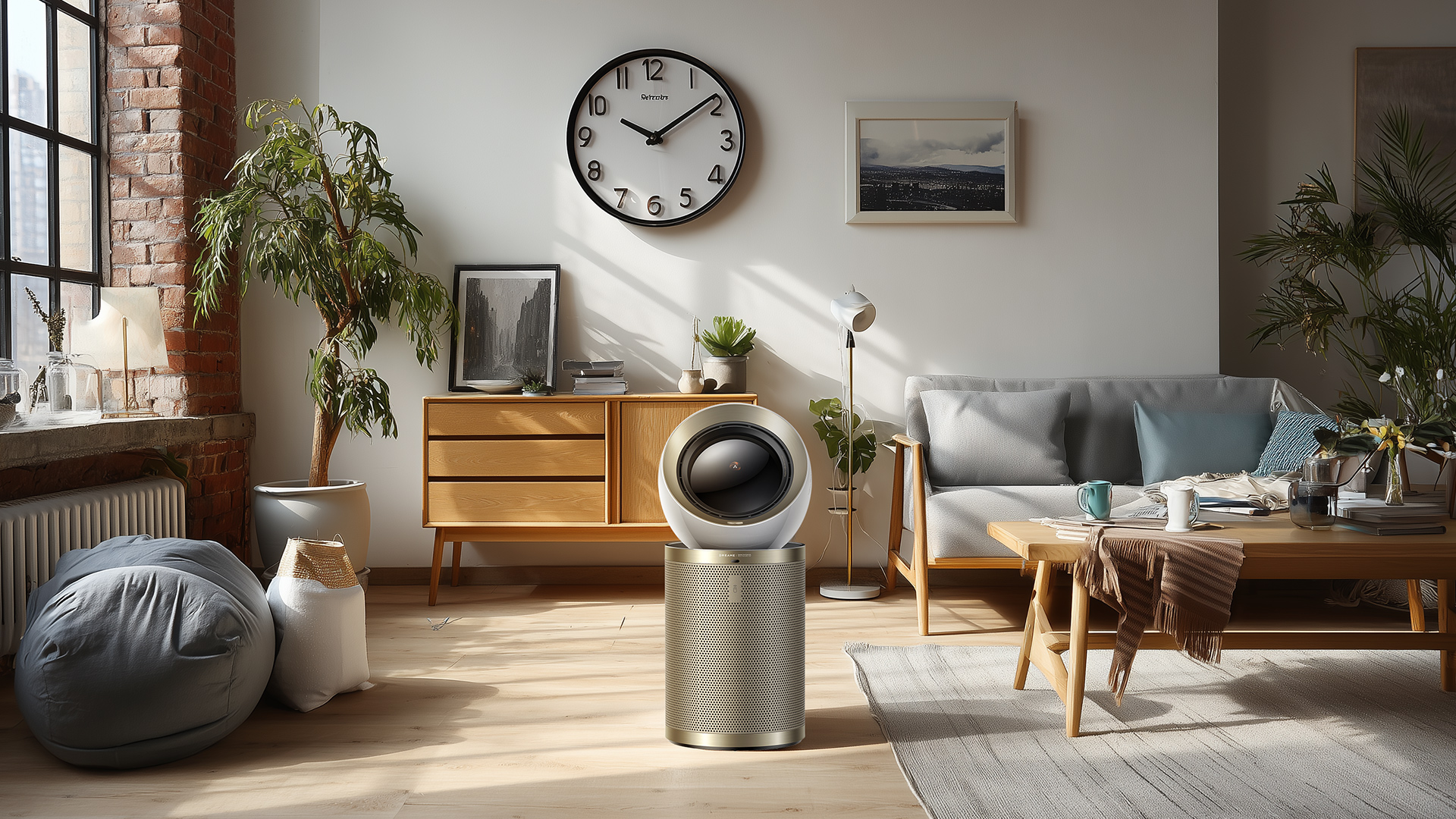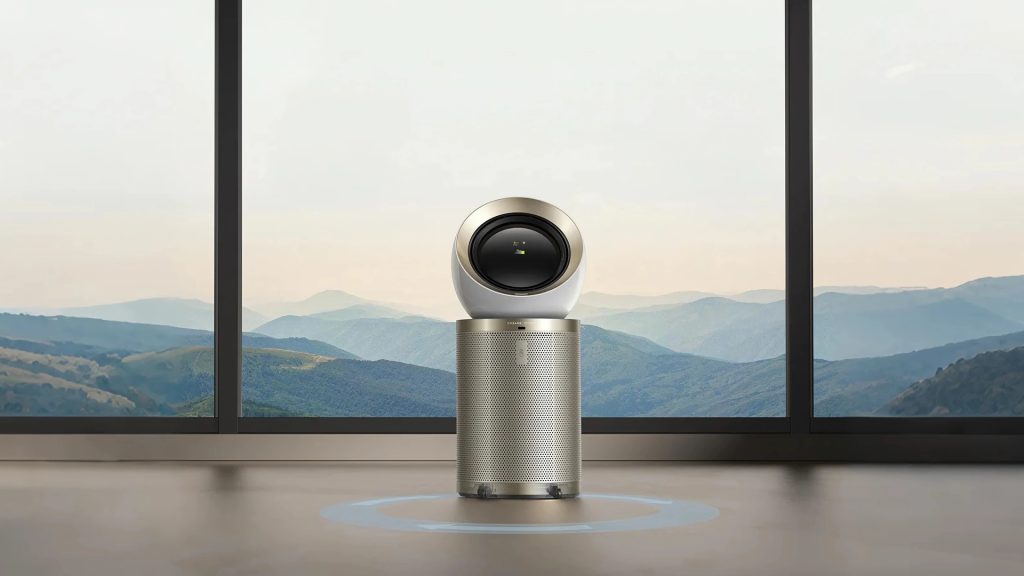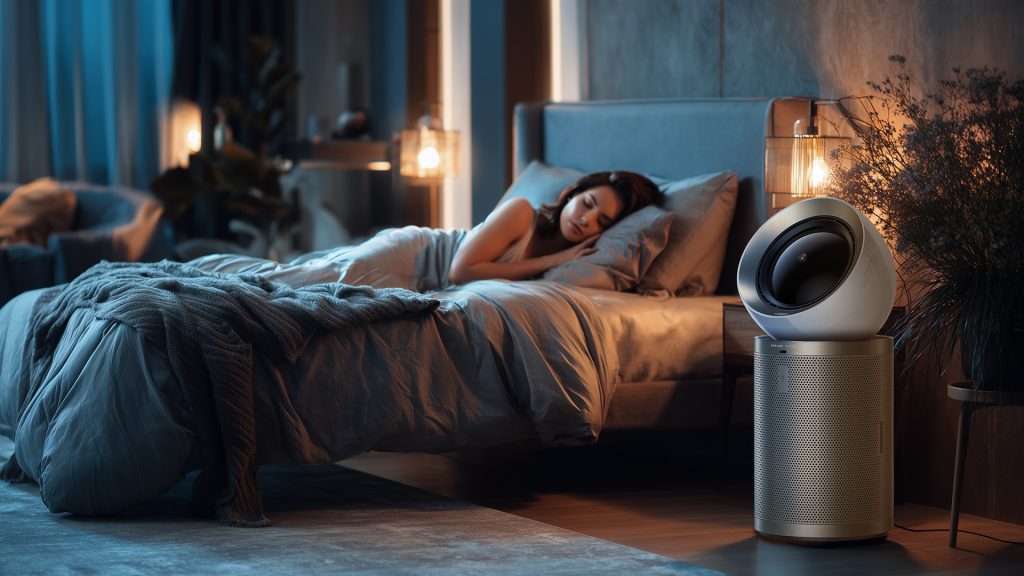
You’ve invested in an air purifier to combat dust, allergies, pet dander, or city pollution. But now you’re left wondering, how long to run an air purifier in a bedroom? Leaving it on 24/7 seems excessive. Turning it off too soon might let dirty air settle back in. What’s the perfect balance?
Here’s the straightforward answer: for the best results, run your air purifier continuously. Clean air is a constant need, especially in environments with persistent pollutants. In this guide, we’ll explore why continuous operation is often recommended, walk through best practices, and share expert tips to help you get the most out of your air purifier, efficiently and effectively.
Table of Contents
Why Your Air Purifier’s Runtime Is a Big Deal
Clean air isn’t a luxury; it’s a necessity. The more consistently your air purifier runs, the better it can remove harmful particles like PM2.5, pollen, pet dander, and volatile organic compounds (VOCs). This is especially important for those with asthma or allergies, and in homes where pollutants are continuously introduced, such as cooking, smoking, or shedding pets.
During high-risk situations like wildfire season or spring pollen surges, a purifier’s effectiveness hinges on its ability to operate long enough to filter incoming contaminants continuously. Short bursts won’t cut it when the air quality is under constant threat.

What’s Your Ideal Runtime? Key Factors to Consider
The best runtime for your air purifier isn’t a one-size-fits-all answer. It depends on several key factors, all of which influence how hard your purifier needs to work to maintain clean, breathable air.
Room Size and Coverage
Larger rooms hold more air and more potential contaminants. To achieve a full air turnover, purifiers in big spaces either need a higher Clean Air Delivery Rate (CADR) or more operating hours. For example, a unit rated around 400 m³/h CADR can fully refresh the air in a mid-sized bedroom several times per hour, but in a large open living space the same unit would need to run longer to achieve the same effect. If your device isn’t powerful enough for the room, you may need to run it longer to achieve the same effect. Matching purifier capacity with room size ensures you’re not overworking a small unit or underusing a powerful one.
Air Quality Conditions
The condition of your indoor and outdoor environment plays a major role in runtime needs. Homes near highways or industrial areas may require longer operation, often 12–24 hours a day in main living spaces, or continuous use during smoke or allergy season. The same goes for allergy seasons or days when wildfire smoke lingers in the air.
Advanced models like the Dreame AirPursue PM20 make this easier by using seven sensors to track PM2.5, VOCs, humidity, and more. These sensors detect air quality in real-time, adjusting performance as needed to maintain consistent results.
Air Purifier Model and Features
Basic models usually run at a fixed speed, requiring manual adjustment. In contrast, smart purifiers with AI-powered features can dynamically optimize operation. In practice, this means you can simply leave the device plugged in with Auto Mode on—it will clean the air when needed and conserve energy when conditions are already good, eliminating the guesswork of “how long to run it.”
For example, the Dreame AirPursue PM20 adjusts its airflow intelligently, providing only as much runtime as the current air quality demands. This not only enhances efficiency but also conserves energy without sacrificing performance.
![]()
Personal Needs and Preferences
Not everyone needs a 24/7 operation. Allergy sufferers, pet owners, or urban residents might benefit from continuous use. Meanwhile, if you live in a rural area with fresh air and minimal indoor pollutants, shorter cycles may be sufficient. The key is aligning the runtime with your sensitivity level and checking your purifier’s air quality display. If readings stay in the “Good” range, shorter cycles may be fine; if they rise, continuous use is best.
Seasonal and Environmental Factors
Air quality fluctuates throughout the year. Spring often brings high pollen levels, while autumn may introduce smoke from regional wildfires. Summer heat can increase ozone levels, and winter often traps indoor pollutants due to poor ventilation. Adjust your purifier’s runtime with the seasons to maintain optimal air quality.
Here are some simple rules about how to adjust the runtime based on the seasons:
- Spring pollen: run overnight in bedrooms, longer on high-pollen days.
- Summer smog: keep windows closed, use carbon filter mode if available.
- Autumn smoke: continuous use in a “clean room” until the air improves.
- Winter indoor air: run in occupied rooms; after brief ventilation, run on high for ~1 hour.
How Long Should You Run an Air Purifier?
Determining ideal runtime involves balancing your home’s air quality needs with specific use cases, such as allergies, pets, or external pollution events.
- Continuous Operation (24/7): Best for maintaining consistent air quality in homes with ongoing pollution sources, like pets, smoke, or frequent cooking. Ideal for allergy and asthma sufferers, or anyone in urban areas with poor air quality.
- Targeted Runtime (8–12 Hours): Effective for bedrooms or specific living areas. For example, running the purifier overnight can significantly reduce allergy symptoms during sleep while limiting energy use.
- Event-Based Runtime: Use this during specific events like wildfires, construction, or high pollen counts. After cleaning, painting, or cooking, run the purifier for 4–6 hours to eliminate temporary pollutants.

Room-Specific Recommendations
- Bedrooms: 8–12 hours at night
- Living rooms: 12–24 hours depending on activity level
- Small spaces: 4–6 hours in low-pollution environments
Choosing the right approach, continuous, targeted, or event-based, depends on your environment and how sensitive you are to air quality changes.
The Cost of Clean Air: Addressing Electricity Concerns
Worried that running your air purifier all day will inflate your electricity bill? Fortunately, most modern units are built with efficiency in mind.
For example, the Dreame AirPursue PM20, its typical operating power consumption is just 7.92 kWh per month, which costs approximately $1.29 per month based on the average U.S. electricity rate for 2025. Even in states with very high electricity rates, such as California or Massachusetts, running the unit continuously for 24 hours a day costs just around $3 per month.
Thanks to smart features like Auto Mode, power is only ramped up when necessary, saving energy without sacrificing performance.
Optimize Your Air Purifier Performance
Beyond just air purifier runtime, there are several ways to enhance your air purifier’s effectiveness while keeping it energy-efficient.
Optimize Your Fan Speed for Better Air
- High speed: Use for quick purification after activities like cooking or during pollen spikes.
- Low speed: Ideal for continuous, low-noise operation, especially at night.
- Auto mode: Smart purifiers like the PM20 detect air quality changes and adjust fan speed automatically to ensure efficient performance.
Placement and Environment
Place purifiers near pollutant sources (kitchens, litter boxes, entryways). Keep windows and doors closed during high-pollution seasons. In low-pollution areas, combine occasional ventilation with purifier use for best results.
Filter Maintenance
Replace filters according to manufacturer recommendations. Clogged or dirty filters reduce performance and energy efficiency.
Using Smart Features
Modern purifiers come equipped with app controls, voice assistants, and scheduling. The PM20, for example, offers remote monitoring, motion detection, and real-time air quality tracking, automating the process and minimizing guesswork.
Frequently Asked Questions (FAQs)
How often should I run my air purifier?
For best results, 24/7. But you can adjust based on air quality and your needs.
How do I know when to change my filter?
Check the user manual. Many smart purifiers will alert you when it’s time.
Can I run my air purifier with the windows open?
Not during high pollution events, it pulls in dirty air. Brief ventilation is fine in clean conditions.
Does running an air purifier on low speed actually work?
Yes. Low speed is excellent for continuous maintenance. Use high speed for quick purification.
What’s the difference between an air purifier and a humidifier?
Purifiers clean the air; humidifiers add moisture. They serve different functions.
Conclusion
To keep your air clean and your lungs happy, continuous operation is ideal for most households. But depending on your air quality, lifestyle, and purifier model, 8–12 hours or event-based use can also do the trick.
Assess your environment, match your purifier to your needs, and take advantage of smart features, like those in the Dreame AirPursue PM20, for optimal performance and energy efficiency.
Learn more about air purifiers with Dreame to find the best fit for your home’s air quality needs.